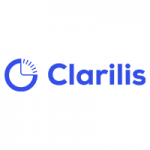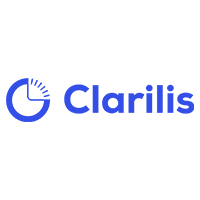Why document automation is becoming a critical companion for a generation of work from home lawyers according to Clarilis
Economic flux, a pandemic, perpetual geo-political curveballs – ceaseless disruption means the working life of lawyers has changed dramatically in recent years. The most significant change being the mass exodus from the office and the rise of hybrid working in the aftermath of the pandemic. However, things seem to be changing again as lawyers and their firms are now struggling to agree on the ideal balance of office and home working. A key issue driving this friction is growing concern that with junior lawyers spending more time working from home, they’re missing out on a critical aspect of their professional development – learning through osmosis.
This article discusses why an enforced full-time, return to the office strategy isn’t the only (or maybe the best) way to address the learning gap created by the increase in homeworking.
The rise of the WFH learning gap
An article published by The Lawyer in December 2023 acknowledged rising anxiety amongst senior lawyers that junior lawyers aren’t learning as quickly due to working from home. The importance of the in-person, firm-specific aspects of legal learning (the impromptu conversations and learning through observation) certainly seem to have become increasingly apparent since they were taken away by the reduction of office time following the pandemic. This has highlighted the existence of a broad learning gap that spans everything from client etiquette and interpersonal skills to the more technical aspects of the job, including drafting.
Pre-pandemic, when a junior encountered a question while drafting, they could simply ask a more experienced colleague in the office for guidance. The same junior lawyer working from home, might feel awkward asking this a simple drafting question when it has to be scheduled as a Teams call. Consequently, instead of validating a query, they might choose instead to follow their own instinct. Understandably, this will not always lead to correct or accurate outcomes. So, to maintain the quality of their work, partners must allocate more time and attention to reviewing drafts to make sure inaccuracies don’t make it into the versions sent to the client. There’s also the risk that the supervisor will just correct a draft when reviewing rather than scheduling a call to feedback, especially if the feedback only consists of minor drafting tips. Consequently, the drafting learning gap has wide-ranging impact – on the junior lawyer, the supervising partner, and potentially even the client.
How to fill the drafting learning gap?
Instincts in senior ranks can be to fill this learning gap by demanding fee-earners spend more days in the office. The gradual increase in office days since 2022 is evidence of this. In Bloomsberg Law’s 2022 Workload and Hours Survey, 31% of respondents said they were fully remote or had ‘complete flexibility’ over their schedule. In 2023, this figure dropped to 13%. However, findings of a survey by legal software firm BigHand suggest growing associate resistance to increasing their office days, with more than a third of respondents stating they’re ‘actively ignoring’ directives to stop working from home. In fact, almost half went as far as to say they would look for a new job if forced to work more than three days a week in the office.
Law firms are facing the possibility that by recalling their lawyers’ freedom to work from home, they could risk losing their best people and it could also prevent them attracting talent in the future. This is driving them to look for new ways to use legal technology to better support lawyers when working remotely. A high-quality document automation solution, such as Clarilis, isn’t just be about efficiency and business gains – it can also act as a digital drafting mentor to the lawyers. For the more junior fee earners, the solution needs to include embedded learning to assist them with making the correct drafting choices for specific transactional requirements. Delivering bite-sized guidance to users at the point of decision is a far better approach than producing long-winded guidance notes, which may or may not be read. The guidance also needs to be dynamic, removing drafting choices that are irrelevant or contradictory to a matter, and alerting users when they make off-market or unusual choices – with bite-size notes provided at the point that drafting decision is made.
Drafting automation also encourages user experimentation by allowing fee earners to explore different drafting options and see the effects in the resulting draft document. By building the draft through the automation, they can see the effect of their answers instantly in approved drafting amendments – in a way that is much more dynamic than just reading a flat precedent.
By facilitating ‘drafting on rails’, such as with the deep automations Clarilis delivers, the virtual mentoring enables senior lawyers to delegate drafting with confidence. Taken a step further, it also allows supervisors to review redlines that separate freehand drafting from the automated output, greatly reducing the time required for review. This gives the supervisor more time to advise and supervise the junior fee earner, and the whole cycle gets faster, quality is improved, and the junior progresses. It’s an approach we describe as ‘drafting on rails’ and it’s far more effective and engaging alternative to issuing catchall, long winded guidance notes, which may or may not be read.
Conclusion: Drafting practices need to evolve for a WFH generation of lawyers
Lawyers who started work post-pandemic may never have experienced full-time life in the office. Document automation can help to fill some of these learning gaps that have emerged in the remote working era, by capturing best practice and ensuring it’s used as the basis for all drafting – whether drafts are produced in the office or at home.
To find out more about Clarilis document automation, visit Clarilis.com.



